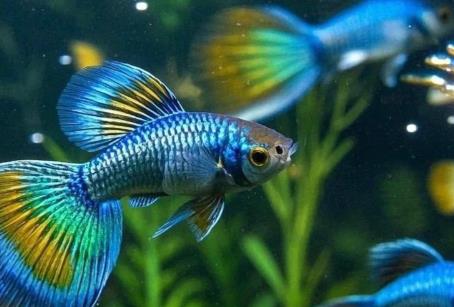Guppies are livebearing fish—they do not lay eggs, but instead give birth to free-swimming fry directly. Below are the key points:

1. Reproduction Method
Livebearing: Fertilized eggs develop inside the female guppy’s body, and she gives birth to live fry (not eggs) directly.
Internal Fertilization: Male guppies use a modified anal fin called a gonopodium to transfer sperm into the female’s body.
2. Reproduction Characteristics
High Survival Rate: Newborn fry can swim immediately, which reduces the risk of being preyed on by other fish.
Frequent Reproduction: Guppies reach sexual maturity quickly (in 3-6 months) with a gestation period of about 22-28 days. Each brood can produce 10-120 fry.
3. Differences from Egg-Laying Fish
Egg-Laying Fish (e.g., goldfish): Fertilization occurs externally, and after laying eggs, the eggs require protection from humans or the parent fish.
Guppies: There is no egg-laying stage—female guppies give birth to fry directly.
4. Reproduction Precautions
Isolate Pregnant Females: Keep pregnant guppies in a separate tank when they are about to give birth to prevent adult fish from eating the fry.
Stable Water Quality: Maintain the water temperature at 24-28°C (75-82°F) and avoid drastic temperature fluctuations.
To further optimize the breeding environment, you can add aquatic plants or a breeding box to provide hiding spots for the fry.
